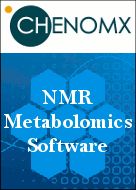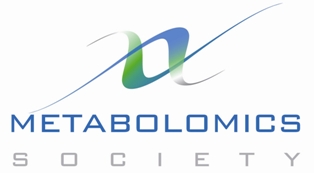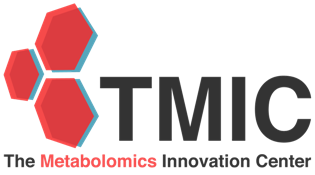29 Apr 2014
|
MetaboLync™: A
Cloud-based Solution for Sharing,
Visualizing, and Analyzing Metabolomics Data
Metabolon, Inc., a leader in
metabolomics-driven biomarker discovery,
announced today the debut and impending
launch of MetaboLync, the company’s
innovative product offering which allows its
clients to share, visualize, and explore
metabolomics study results as a client
directs. The company will unveil the
capabilities of this new cloud-based
software solution at the 2014 BIO-IT World
Expo in Boston, Massachusetts on April
30th. Corey DeHaven, Metabolon’s VP of
Information Systems, is the visionary
architect of the company’s metabolomics data
processing, analysis and storage systems.
The company will exhibit, and Corey will
provide, an introduction to the portal,
including a demonstration of its
capabilities, in an oral presentation within
the Harnessing Data & Standards session.
“The MetaboLync client portal is our first
informatics solution available to external
users and further exemplifies our leadership
position in metabolomics research and
diagnostics. Extracting functional results
from the information-rich metabolomics data
stream is key to advancing our and our
clients’ research. This portal will empower
users to more effectively visualize and
navigate thru their own results
interactively,” commented Metabolon’s
President and CEO, John Ryals.
Informatics solutions have played an active
and critical role in building Metabolon’s
leading biomarker discovery and metabolomics
profiling platforms, DiscoveryHD4™ and
TrueMass™. Metabolomics experiments
generate a large amount of data, including
both named and unnamed metabolites, group
statistical analysis, and biological pathway
annotations. Data visualization and
analytical tools are required to aid in
understanding the data, including
relationships among detected metabolites and
their effects on the underlying biology.
MetaboLync leverages cloud-based resources
and web service application program
interfaces (APIs) to enable these
functions. Equally important, this
portal solution will enable Metabolon’s
clients to directly access their
metabolomics study results as well as final
reports interpreted by our biochemists that
detail the biological significance of those
results. We expect MetaboLync portal
access will be available to clients for
active research studies on May 15th when the
company plans to migrate to a new website
platform.
Source: Metabolon
Press Release
|
15 Apr 2014
|
Serum or plasma?
Mass spec metabolomics decides
Serum vs. plasma
Metabolomics techniques, in which the global
responses of cells or organisms are monitored by
observing all of the metabolites present, have
been used with some success in clinical,
environmental and toxicological studies. In the
biomedical area, the tests are often carried out
on plasma or serum to detect anomalies that can
point to a particular disease or disorder but
there has been some confusion between the two
fluids. Although they are both derived from
blood, they are not equivalent due to the
different methods of preparation.
A few studies have compared the metabolomes of
serum and plasma with different results and the
variations might well derive from the techniques
employed. For instance, GC/MS and LC/MS are
popular ways to measure large numbers of
metabolites but they do not look at the same
groups of compounds.
GC/MS focuses on low-molecular-mass metabolites
up to about 350 Da that can be confirmed from
their retention times and mass spectra. So,
organic acids, amino acids, carbohydrates and
some phosphorylated metabolites are the types of
compounds detected. In contrast, LC/MS focuses
on compounds up to about 1500 Da, taking in bile
acids, sterols, phospholipids and fatty acids.
However, the spectra and retention times are
less reproducible, due to differences in column
and mass spectrometer designs.
These differences have prompted Chinese
researchers to compare the ability of GC/MS and
LC/MS to differentiate between rat serum and
plasma. Hongmei Lu and colleagues from Central
South University, Changsha, wanted to see how
successful the techniques were in identifying
the differences in the two metabolomes, which
would help to direct future studies.
Blood types
Blood was collected from healthy rats and
treated with potassium EDTA as an anticoagulant
for those samples destined for plasma
preparation. After centrifugation, the plasma
was retained and stored. For serum, the
anticoagulant was omitted to allow fibrin clots
to form and the clear serum was collected
following centrifugation.
Quality control samples were also prepared by
pooling test samples in order to condition the
instruments, which helps to gain reproducible
measurements. They are also used to estimate
drift during the run cycles and to calculate the
measurement precision. Saline as blanks, QC
samples and real sera or plasma were measured in
sequence to monitor and control the experiments.
Before GC/MS, the samples were treated with a
silylating reagent to derivative compounds such
as fatty acids and alcohols, which would
otherwise be insufficiently volatile to pass
through the columns. They were run through a
GC/MS machine with electron ionisation and
spectral searching against the NIST reference
library.
The LC/MS samples were not derivatised. They
were analysed on a time-of-flight instrument
with electrospray ionisation in both positive-
and negative-ion modes for greater coverage.
After preprocessing the chromatographic and mass
spectrometric data, it was submitted to several
metabolomics databases to identify the
metabolites present.
Mass spec highlights serum and plasma
disparities
The GC/MS data delivered a total of 31
endogenous metabolites that were identified, the
coefficients of variation of their peak areas
being within accepted boundaries for
metabolomics studies. The tight clustering of
the QC samples in a principal components
analysis confirmed the reproducible experimental
conditions.
Overall, there were more peaks in serum than in
plasma and they tended to be more abundant but
these characteristics are too vague to
differentiate the two biofluids. Greater success
would be achieved using a subset of eight of the
identified metabolites which had different
abundances (peak areas) in plasma and serum.
They included tryptophan, which was abundant in
plasma but absent from serum, and arachidonic
acid, which was more abundant in serum, being
released during blood coagulation. The other
biomarkers were 2-hydroxypropanoic acid,
glycine, creatinine, phosphoric acid, galactose
and octadecenoic acid.
The reproducibility of the LC/MS measurements
was worse than for GC/MS, but was still regarded
as acceptable. In this case, a total of 20
metabolites distinguished serum from plasma, 13
detected in positive-ion mode and seven in
negative-ion mode.
The former included phenylethylamine but the
remainder were all of higher molecular mass
above 495 Da and included several phospholipids
such as phosphatidylcholine and
lysophosphatidylcholine, both of which were
detectable at both polarities.
So, both GC/MS and LC/MS can be used to
discriminate between serum and plasma, although
they do it with different sets of metabolites to
each other. GC/MS has the better reproducibility
but either method would provide satisfactory
results.
The data also confirm that there are major
differences in the metabolome of the biofluids,
which should be taken into account in future
research and when comparing experiments from
different labs.
- Paper: Biomedical
Chromatography 2014 (Article in
Press): "Joint MS-based platforms for
comprehensive comparison of rat plasma and
serum metabolic profiling"
|
1 Apr 2014
|
Metabolomics in
Food and Nutrition Laboratories
The potential to accurately and rapidly
measure hundreds of individual molecular
species provides novel opportunities for food
and nutrition sciences. By enabling the
molecular fingerprinting of food components
and their metabolites, metabolomics is helping
scientists to investigate the intricate
relationship between food and human health.
Here, we look at the various applications,
strategies, and tools related to metabolomics.
Food not only provides us with energy, but also
modulates our health and well-being. Yet it
remains largely unclear which components in food
— and through which mechanism of action — can
reduce the risk of disease or improve health. As
we enter a new era of technology, the potential
to accurately and rapidly measure hundreds of
individual molecular species provides novel
opportunities for food science and nutrition ( 1–4).
For food and nutrition researchers,
metabolomics, the screening of small-molecule
metabolites, enables the molecular
fingerprinting of food components. Of no less
consequence, metabolomics also confers the
ability to evaluate the effect of ingested food,
by providing an analytic "snapshot" of
metabolism.
Food Metabolome
Because of metabolomics, considerably more
chemical detail emerges from the analysis of
foods and beverages. In certain foods, thousands
of chemical entities are now detected,
identified, or both. Knowledge of food
metabolomes (collections of natural and
nonnatural components in a particular food or
food group) could provide critical information
for studying complex interactions between
nutrition and health. The characterization of
food metabolomes also affects food producers,
who optimize organoleptic properties (aromas and
flavors) and increase the abundance of healthy
compounds in their products.
Natural Food Components
Until recently, food analyses were limited to
estimating nutritional values within the content
of six broad categories: carbohydrates, fats,
proteins, water, vitamins, and minerals.
Metabolomics is transforming modern nutrition
research by revealing the thousands of
nonnutrient food components that, although not
life-sustaining, could affect human well-being
and health. For example, we know that
phytochemicals such as lycopene (in tomatoes),
isoflavones (in soy), and flavanoids (in fruits)
are responsible not only for the organoleptic
properties of the plants in which they are found
but also for their salutary effect on human
health.
Nonnatural Food Components
Besides natural products, metabolomics is used
to screen foods and beverages for a plethora of
environmental chemicals like pesticides,
contaminants derived from drugs and consumer
products, or even pathogens and toxins ( 5–10).
Thus, metabolomics is helping to solve some of
the new challenges that the modern food industry
faces such as the discovery of biomarkers that
detect the safety, quality, and traceability of
food products. Furthermore, metabolomics is
providing novel insights into the effects of
food additives, preservatives, and transgenic
modifications on human health and the
environment.
Food Processing and Storage
Metabolomics is leading scientists to discover
and characterize the chemical modifications in
food caused by its storage and processing, which
could dramatically alter molecular content and
health properties. Indeed, food preparation
methods (frying versus baking and steaming
versus boiling) could significantly affect the
molecular composition of food products, as could
preservation processes like freezing, drying,
smoking, and refrigerating.
Dietary Biomarkers
The characterization of food metabolomes is
leading to the discovery of food-specific
biomarkers, which are indicators of diet
exposure and food consumption. Already,
metabolomic screenings have revealed urinary
markers associated with an individual's dietary
intake. These markers include 1-methylhistidine,
for meat-rich diets; trimethylamine, for
fish-rich diets; and phenylacetylglutamine, for
vegetable-rich diets. Similar quantitative
screening of metabolites could facilitate the
monitoring of food consumption in
epidemiological or dietary intervention studies.
Food and Human Health
Epidemiologic studies suggest dietary patterns
could significantly lower the risk of certain
diseases including cardiovascular disease,
Alzheimer's disease, and cancer. Currently,
diets enriched in natural antioxidant, vitamins,
and phytochemicals are perceived as healthy in
western countries, where diets generally include
those compounds in the form of nutritional
supplements. Yet knowledge of the mechanism by
which dietary compounds and diet regimens
actually affect human health is limited.
Investigating the effects of dietary compounds
on human health could help in formulating
optimal nutritional recommendations.
Dietary Fats and Lipidomics
Lipids represent the bulk of fats found in food.
Along with proteins and carbohydrates, they
constitute the three major classes of nutrients.
Typical examples of dietary lipids are
cholesterol, triglycerides, saturated fatty
acids, and trans-fat. Ingestion of lipids has
been linked to various pathological conditions
including obesity, metabolic syndrome, and
cardiovascular diseases. However, not all lipids
are associated with increased disease risk.
Indeed, some other well-known dietary lipids,
such as omega-3 fatty acids and vitamins A and D
have been linked to improving human health,
which might explain their exponential growth as
nutraceuticals.
Lipidomics, the metabolomic analysis of lipids,
falls under the umbrella of metabolomics.
Nevertheless, the distinct solubility properties
of lipids often dictate their separate analysis
in metabolomic experiments. Indeed, unlike polar
metabolites (for example, amino acids and
nucleotides), lipids are mostly insoluble in
water. Thus, lipids require organic solvents or
distinct solid-phase extraction (SPE) procedures
for their extraction from biological samples.
References
- S. Primrose, J. Draper, R. Elsom, V.
Kirkpatrick, J.C. Mathers, C. Seal, M.
Beckmann, S. Haldar, J.H. Beattie, J.K.
Lodge, M. Jenab, H. Keun, and A. Scalbert,
Br. J. Nutr. 105, 1277–1283 (2011).
- M.J. Gibney, M. Walsh, L. Brennan, H.M.
Roche, B. German, and B. van Ommen, Am. J.
Clin. Nutr. 82, 497–503 (2005).
- D.S. Wishart, Trends Food Sci. Technol.
19, 482–493 (2008).
- L. Brennan, Biochem. Soc. Trans. 41,
670–673 (2013).
- R.A. Dixon, D.R. Gang, A.J. Charlton, O.
Fiehn, H.A. Kuiper, T.L. Reynolds, R.S.
Tjeerdema, E.H. Jeffery, J.B. German, W.P.
Ridley, and J.N. Seiber, J. Agric. Food
Chem. 54, 8984–8994 (2006).
- M.J. Simpson and J.R. McKelvie, Anal.
Bioanal. Chem. 394, 137–149 (2009).
- S. Trenkamp, P. Eckes, M. Busch, and A.R.
Fernie, Metabolomics 5, 277–291 (2009).
- L.W. Sumner, P. Mendes, and R.A. Dixon,
Phytochemistry 62, 817–836 (2003).
- J.G. Bundy, M.P. Davey, and M.R. Viant,
Metabolomics 5, 3–21 (2009).
- R. Stierum, W. Heijne, A. Kienhuis, B. van
Ommen, and J. Groten, Toxicol. Appl.
Pharmacol. 207, 179–188 (2005).
|












